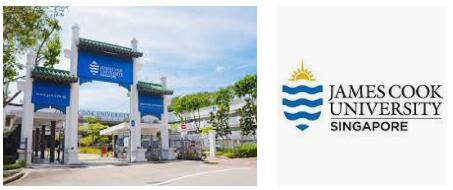Preparation of the stay
Before I decided to spend my semester abroad in Singapore, I found out more about various universities, especially in Asia, as I’ve been fascinated by Southeast Asia since my last vacation in Malaysia. The international events organized by the DHBW also helped me with this, where I could find out more about the different universities. Because the period at the JCU with the trimesters offered fits very well with the short semesters at DHBW and Singapore a safe and pleasant place to study, as well as a good starting point for further trips to Asia, I finally decided on the James Cook University in Singapore. First of all, I inquired about the possible courses and, together with the DHBW, created a learning agreement. Unfortunately, I had few alternatives in the event that courses did not materialize, although this concern was unfounded in retrospect.
I processed the application with the help of “MicroEDU”, who supported me in all formal matters and communicated directly with the university, so that I could always forward the necessary documents directly to MicroEDU, who first checked them for correctness and completeness. before they were forwarded to the JCU.
For entry you will receive a letter from the ICA, with which you can then apply for your visa in the form of a student card on site. Everything is well organized by the university and the costs for it are already included in the tuition fees. However, a passport photo is required for this. It is best to bring one with you (not older than 3 months) or have one done on site.
At the airport I was picked up by a JCU service and taken to my accommodation which consisted of a hostel for the first two weeks. From there I was able to search for accommodation through various websites such as gumtree. In general, it can be said that rental prices in Singapore are very high. For a single room in a shared apartment, you usually have to calculate between € 600 and € 800 per month. The university also offers an apartment search service, but these are usually a bit more expensive than if you go looking for it yourself. I searched through websites and found a single room in a very nice condo with pool, which I used extensively, for 1200 SGD. Of course, you can also share a room, then the prices will be correspondingly lower. The best place to look is in the districts of Kallang, Geylang, Paya Lebar, Eunos and Kembangan, all of which are within easy reach of the university.
Studied at JCU Singapore
The JCU is located in the east of Singapore on a campus that opened in the summer. Accordingly, it is also modern. There are many common areas for studying, such as the Student Hub or the library. In general, the JCU is doing a lot to make learning easier. There is a learning support that can help with assignments and during the examination phases, lecture rooms were also made available for self-study and the Student Hub was open 24/7 for all night owls learning. The canteen was a bit different from what we are used to in Germany and consisted of various food stands. You could choose between Chinese, Malay, Japanese, Indian or Western food every day and the food in Singapore is really one of the big highlights. You could also register in the in-house gym.
The special thing about the JCU is the strict attendance requirement. In the morning and for the courses you have to stamp your fingerprint and there is a three-hour attendance on campus for international students every day. In total, a presence of at least 90% must be achieved. The personal attendance rate can be checked regularly via an app. However, it is usually also possible to apply for a “Leave of Absence” without any problems if you want to go on a trip to one of the many easily accessible countries around Singapore.
In order to cover my compulsory modules in the 3rd semester, I took four courses at the university: International Marketing, Organizational Behavior, Cross-Cultural Management and Financial Management. All courses consisted of assignments and a final exam at the end of the semester. In general it can be said that there are no language barriers at the university in Singapore, as all courses are held in English and the lecturers speak fluently and understandably, even if they come from all over the world. For example, I had lecturers from China, Australia and Great Britain, who had also lived in many other countries.
- Learn more information about the country of Singapore and continent of Asia on 3rjewelry.
Regarding the content, you can say that the level is a bit below that at the DHBW, but there are many assignments and homework during the semester, which take a lot of time. This applies above all to group work. This required a lot of time and patience and unfortunately also contributed to the fact that a large part of the final grade was reduced to an “average value” that results from such work. On the other hand, it also taught me a lot of patience. The presentations, which served as the basis for the lectures, were not provided by the lecturers themselves, but by the university in Australia and unfortunately more than taught in some cases, although this certainly cannot be generalized to all professors. In addition to the lectures, there was one tutorial each week in which what was learned was repeated and applied, which personally helped me a lot. Attendance was compulsory in both the lectures and the tutorials and had to be stamped in. Now to the courses themselves:
